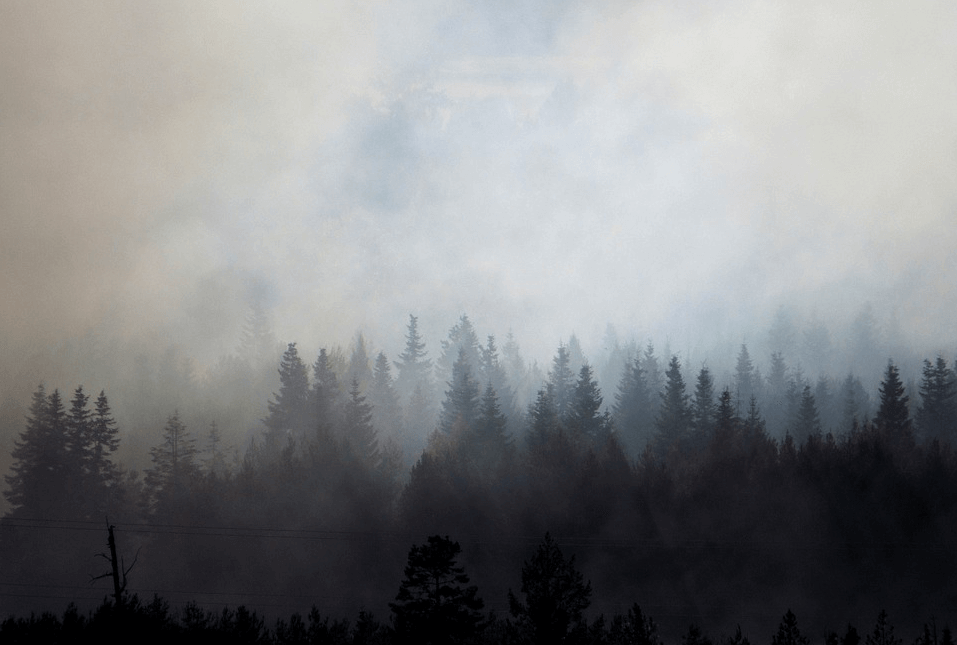
As of July 29, 2019, California enacted an emergency regulation to protect workers from wildfire smoke. This emergency regulation may be in effect up to one year until a permanent regulation is enacted. The California Code of Regulations, title 8, section 5141.1 applies to most outdoor workplaces where the current Air Quality Index (current AQI) for airborne particulate matter 2.5 micrometers (PM2.5)* or smaller is 151 or greater. Wildfire smoke is composed of harmful chemicals and tiny particles suspended in the air that present a significant health hazard for workers exposed to it. These particles can irritate the lungs and cause serious or even fatal health effects, such as:
- Reduced lung function
- Bronchitis
- Worsening of asthma
- Heart failure
Employers with workplaces and operations must comply with the full standard when both of the following conditions apply:
- The current AQI for PM2.5 is 151 or greater, regardless of the AQI for other pollutants
- The employer should reasonably anticipate that employees may be exposed to wildfire smoke
Employers with any of the following conditions are exempt from complying with this new regulation:
- Enclosed buildings or structures in which the air is filtered by a mechanical ventilation system and the employer ensures that windows, doors, bays and other openings are kept closed to minimize contamination by outdoor or unfiltered air.
- Enclosed vehicles in which the air is filtered by a cabin air filter and the employer ensures that windows, doors and other openings are kept closed to minimize contamination by outdoor or unfiltered air.
- The employer demonstrates that the concentration of PM2.5 in the air does not exceed a concentration that corresponds to a current AQI of 151 or greater.
- Employees exposed to a current AQI for PM2.5 of 151 or greater for a total of one hour or less during a shift.
*This definition applies to airborne particles smaller than 2.5 micrometers (human hair is approximately 30 times thicker than a PM2.5 particle).
Current Air Quality Index (Current AQI) is the method used by the U.S. Environmental Protection Agency (U.S. EPA) to report air quality on a real-time basis.
Current AQI is also referred to as the “NowCast,” and represents data collected over time of varying length in order to reflect present conditions as accurately as possible.
The current AQI is divided into six categories as shown in the table below.
| Air Quality Index (AQI) Categories for PM2.5 | Levels of Health Concern |
|---|---|
| 0 to 50 | Good |
| 51 to 100 | Moderate |
| 101 to 150 | Unhealthy for Sensitive Groups |
| 151 to 200 | Unhealthy |
| 201 to 300 | Very Unhealthy |
| 301 to 500 | Hazardous |
Source: https://www.airnow.gov/
Additional federal, state, and local government sources for current AQI for PM2.5 information:
The regulation lists the following requirements for employers to protect their employees from wildfire smoke.
- Identification of Harmful Exposures: Exposure to PM2.5 must be calculated before each shift and periodically thereafter.
- Communication: Employers must communicate wildfire smoke hazards in a form readily understandable by all.
-
Training and instruction: Mandatory training and instruction for all employees should include information on:
- The health effects of wildfire smoke.
- The right to obtain medical treatment without fear of reprisal.
- How employees can obtain the current Air Quality Index (AQI) for PM2.5.
-
The requirements in Title 8, section 5141.1 about wildfire smoke.
- Check the current AQI before and periodically during each shift.
- Provide training to employees.
- Lower employee exposures.
- Provide respirators and encourage their use.
-
The employer's two-way communication system.
- Employers shall alert employees when the air quality is harmful and what protective measures are available to employees.
- Employers shall encourage employees to inform their employers if they notice the air quality is getting worse, or if they are suffering from any symptoms due to the air quality, without fear of reprisal.
-
The employer's methods to protect employees from wildfire smoke.
- Locating work in enclosed structures or vehicles where the air is filtered.
- Changing procedures such as moving workers to a place with a lower current AQI for PM2.5.
- Reducing work time in areas with unfiltered air.
- Increasing rest time and frequency, and providing a rest area with filtered air.
- Reducing the physical intensity of the work to help lower the breathing and heart rates.
- The importance, limitations, and benefits of using a respirator when exposed to wildfire smoke.
-
Respirators: Employers must provide their workers with proper respirators for voluntary use when the current AQI for PM2.5 is 151 or greater. If the AQI is greater than 500, respirator use is required.
- An N95 mask is a disposable filtering facepiece respirator with two straps. It is the minimum level of protection for wildfire smoke. When worn properly (with the mask making a tight seal with the user's face), it can protect against hazardous airborne particles.
-
Employers must read and follow the manufacturer's instructions on the respirator's use, maintenance, cleaning and care, along with any warnings regarding the respirator's limitations.
- Do not wear respirators in areas where the air contains contaminants for which the respirator is not designed.
- Only use your own respirator.
- Employees who have a heart or lung condition should ask their doctor before using a respirator.
- Employees must be educated on how to properly position, use, and maintain the respirators provided by the employer.
